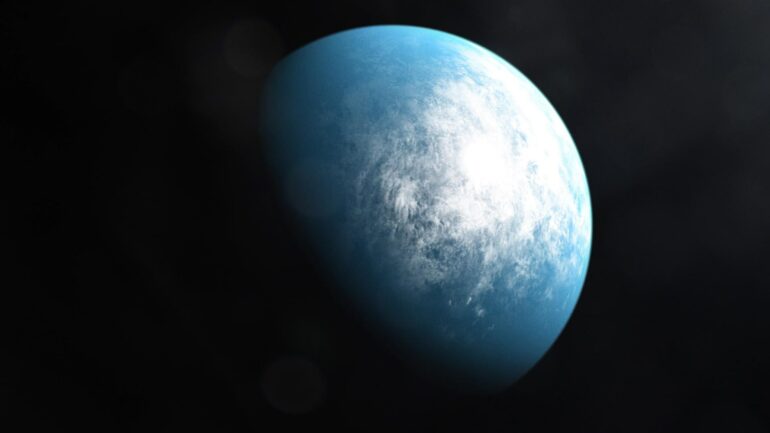NASA recently announced the discovery of a new, Earth-sized planet in the habitable zone of a nearby star called TOI-700. We are two of the astronomers who led the discovery of this planet, called TOI-700 e. TOI-700 e is just over 100 light years from Earth – too far away for humans to visit – but we do know that it is similar in size to the Earth, likely rocky in composition and could potentially support life.
You’ve probably heard about some of the many other exoplanet discoveries in recent years. In fact, TOI-700 e is one of two potentially habitable planets just in the TOI-700 star system.
Habitable planets are those that are just the right distance from their star to have a surface temperature that could sustain liquid water. While it is always exciting to find a new, potentially habitable planet far from Earth, the focus of exoplanet research is shifting away from simply discovering more planets. Instead, researchers are focusing their efforts on finding and studying systems most likely to answer key questions about how planets form, how they evolve, and whether life might exist in the universe. TOI-700 e stands out from many of these other planet discoveries because it is well suited for future studies that could help answer big question about the conditions for life outside the solar system.
Specific methods for detecting exoplanets, like the transit method, which looks for a dip in the light coming from a distant star as a planet passes in front of it, have led to an explosion in the number of known exoplanets.
From 1 to 5,000
Astronomers discovered the first exoplanet around a Sun-like star in 1995. The field of exoplanet discovery and research has been rapidly evolving ever since.
At first, astronomers were finding only a few exoplanets each year, but the combination of new cutting-edge facilities focused on exoplanet science with improved detection sensitivity have led to astronomers’ discovering hundreds of exoplanets each year. As detection methods and tools have improved, the amount of information scientists can learn about these planets has increased. In 30 years, scientists have gone from barely being able to detect exoplanets to characterizing key chemical clues in their atmospheres, like water, using facilities like the James Webb Space Telescope.
Today, there are more than 5,000 known exoplanets, ranging from gas giants to small rocky worlds. And perhaps most excitingly, astronomers have now found about a dozen exoplanets that are likely rocky and orbiting within the habitable zones of their respective stars.
Astronomers have even discovered a few systems – like TOI-700 – that have more than one planet orbiting in the habitable zone of their star. We call these keystone systems.




